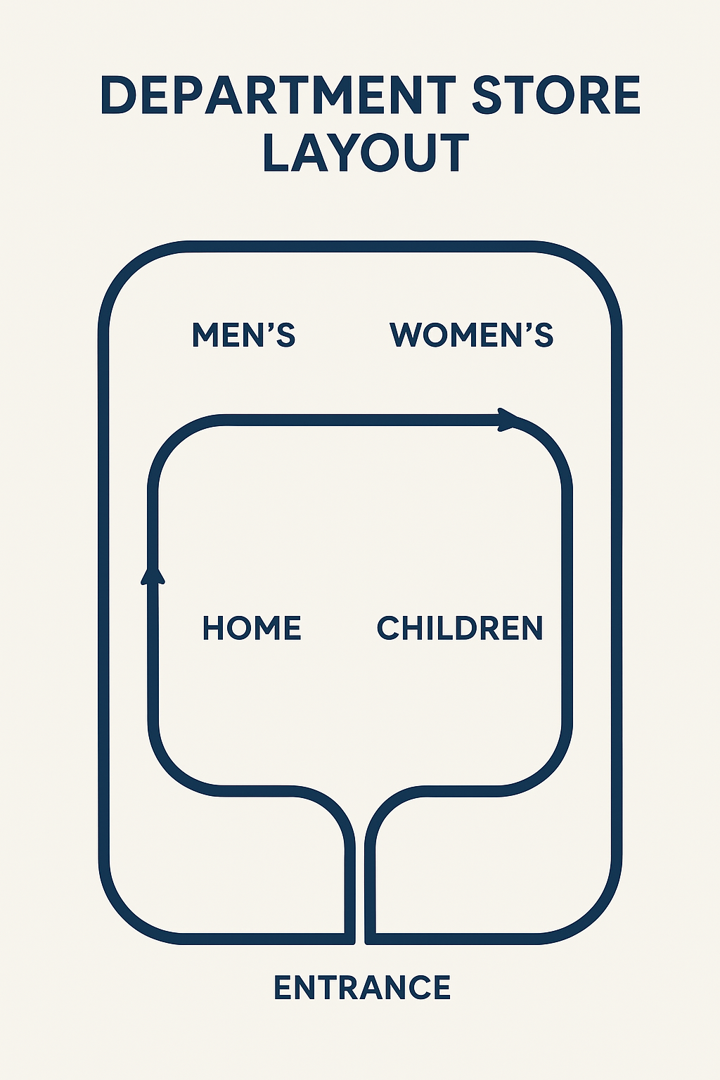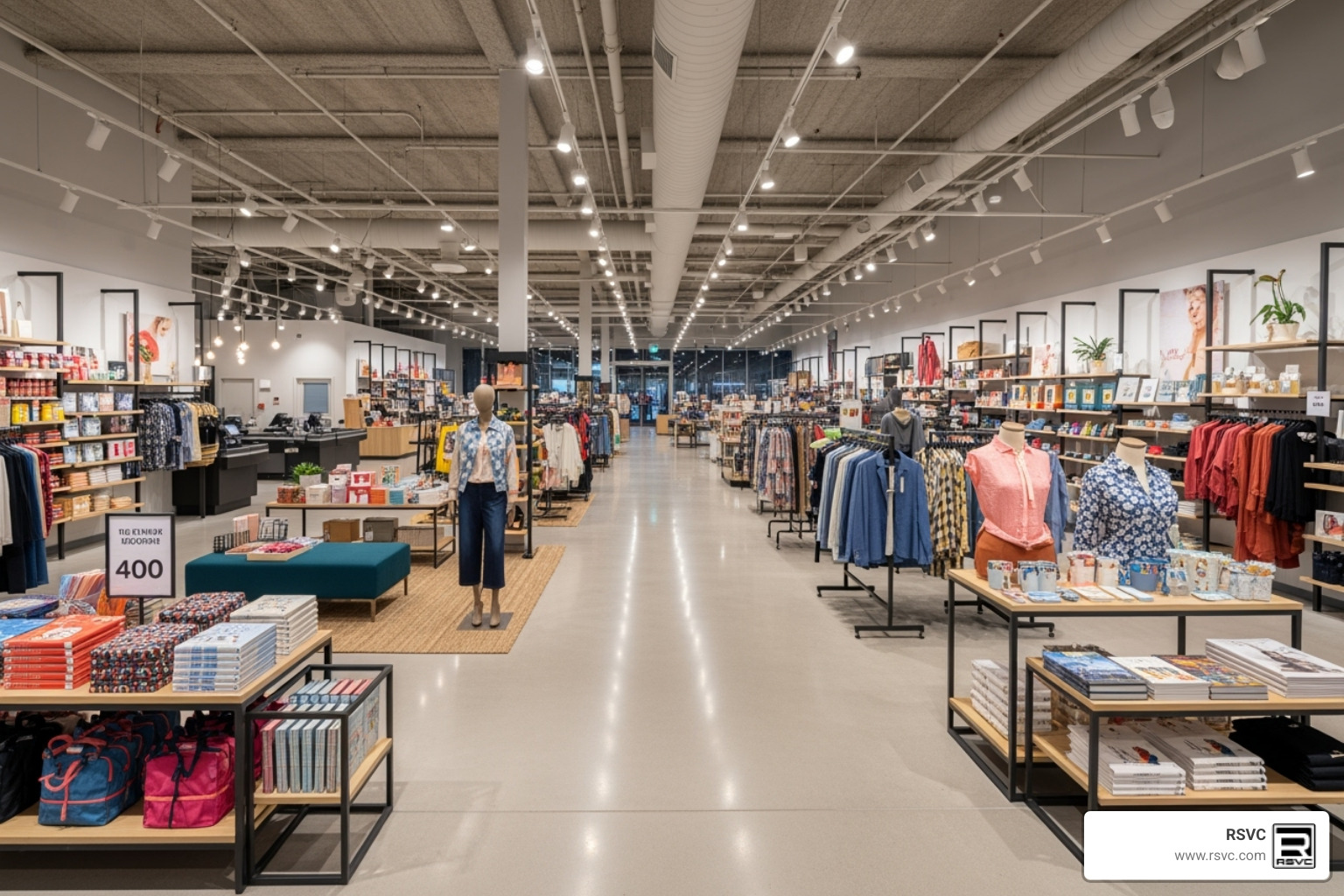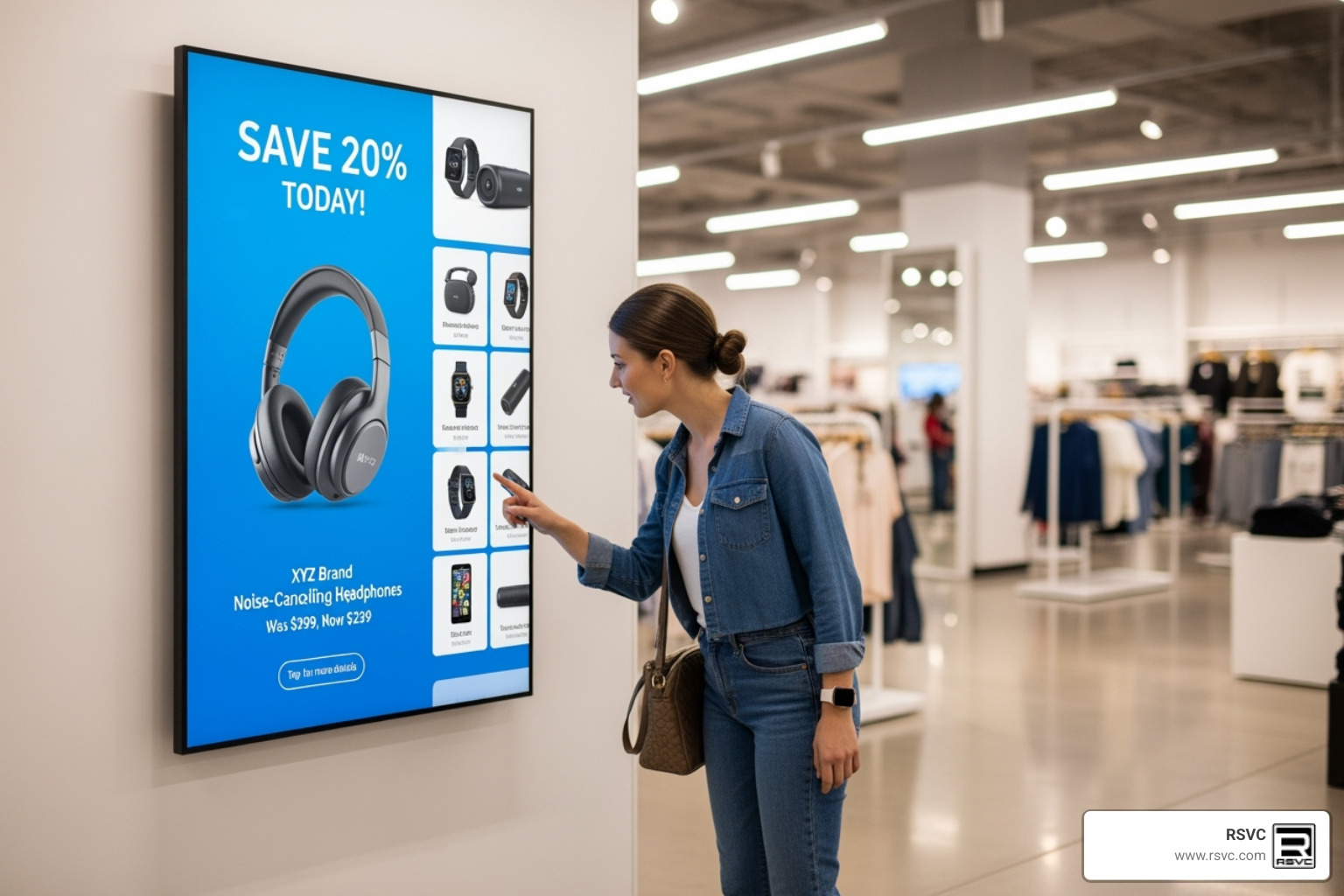Your store’s design is more than just a visual backdrop—it’s one of the most powerful tools you have to influence customer behavior and drive sales. From layout and lighting to color schemes and product placement, every element communicates your brand’s story and shapes the shopping experience. A thoughtfully designed space can guide customers naturally through your store, highlight key products, and create an environment that encourages longer visits and more purchases.
Beyond aesthetics, store design impacts how customers feel the moment they walk in. A well-organized, inviting space builds trust, reinforces professionalism, and can even evoke emotions that influence buying decisions. In today’s competitive retail landscape, where consumers have countless options online and offline, the stores that stand out visually and experientially are the ones that capture attention—and loyalty.
Key Ways Store Layout Impacts Your Bottom Line:
The link between physical space and shopping behavior is powerful. Customers predictably turn right upon entering, move counterclockwise, and always notice free-standing displays. Pleasant scents can even increase spending by up to 54%.
These are predictable behaviors that smart retailers use to their advantage.
Store construction choices matter just as much as layout. Lighting placement affects mood and product visibility. Aisle width impacts comfort and accessibility. Flooring materials influence navigation patterns. Even the electrical infrastructure determines where you can place digital displays.
For facilities managers in California, understanding these principles is key. The right combination of layout and construction can transform any retail space—from a Los Angeles grocery store to a San Francisco department store—from functional to highly profitable.
Intentional design during construction and renovation is what separates a store that merely exists from one that drives sales.
A store's atmosphere—be it welcoming or chaotic—is no accident. It's the result of deliberate design choices that tap into shopper psychology.
Understanding how store layout and construction impact customer flow and sales starts with the psychology of shopping. Knowing what makes customers tick allows you to create spaces that feel natural, comfortable, and profitable.
The first 5 to 15 feet inside your store is the decompression zone. Here, shoppers transition from the outside world, adjusting to the lighting and getting their bearings.
Shoppers absorb little in this zone, so placing key merchandise here is a waste. Instead, keep this area open and inviting—a mental welcome mat.
Once past this zone, about 90% of shoppers naturally turn right and proceed in a counterclockwise path. This consistent pattern was documented extensively by retail psychologist Paco Underhill.
The first wall shoppers see after turning right is the power wall—prime real estate for high-margin or new items. Aligning your layout with this natural pattern means working with human nature, not against it.
Our approach to retail construction always considers these psychological principles from the ground up, ensuring the physical structure supports natural flow patterns.
Getting customers in the door is just the start. The goal is to make them slow down and explore. The longer customers spend in your store—known as dwell time—the more likely they are to buy. In fact, research shows high dwell time increases buying likelihood significantly. This taps into the sunk-cost fallacy: the more time invested browsing, the more psychological pressure a shopper feels to make a purchase.
How do you encourage customers to linger? By creating a sensory environment.
These sensory elements act as speed bumps, slowing customers down, increasing product findability, and triggering impulse purchases. Combining thoughtful sensory design with smart construction creates a space that works hard to drive sales.
Choosing the right store layout is a critical decision. It's a blueprint for guiding customer behavior, maximizing product exposure, and driving sales. How store layout and construction impact customer flow and sales starts with this fundamental choice.
Different businesses need different approaches. Understanding each layout's strengths is essential, whether you're planning a new build or renovating commercial property.
| Layout Type | Pros | Cons | Best For |
|---|---|---|---|
| Grid | Maximizes space, systematic browsing, easy to restock | Can feel impersonal, limited impulse buys | Supermarkets, pharmacies, convenience stores |
| Loop (Racetrack) | Guides customers through entire store, maximizes exposure, encourages impulse buys | Can be frustrating for hurried shoppers, less flexible | Department stores, IKEA, clothing stores |
| Free-Flow | Relaxed browsing, encourages exploration, high-end feel | Can waste space, difficult to steer for some | Boutiques, specialty stores, high-end retail |
| Herringbone | Maximizes product in small spaces, good visibility | Can feel cramped, challenging for accessibility | Discount stores, hardware stores |
| Spine | Clear main aisle to key departments, directs traffic | Can funnel customers past less-desired areas | Medium to large retailers, some department stores |
| Showroom | Highlights limited selection, encourages interaction | Limited on-hand stock, requires sales assistance | Furniture stores, car dealerships, specialty electronics |
| Mixed | Combines best aspects of multiple layouts, flexible | Complex to design, potential for inconsistency | Large department stores, diverse product ranges |
In California, different layouts suit different retailers. Los Angeles grocery stores often use a grid layout. The neat, parallel aisles are designed for efficiency and to ensure shoppers pass every product category.

San Francisco department stores often use a loop, or racetrack, layout (as shown above). In this design, the store is arranged along a continuous path that loops around the sales floor, guiding customers through each section in a deliberate sequence. By following the loop, shoppers are naturally exposed to a wide range of merchandise, increasing the likelihood of impulse purchases and helping retailers maximize both product visibility and sales opportunities.
In San Diego, boutiques and specialty shops often embrace a free-flow layout. Unlike structured store designs, this open arrangement encourages customers to wander and explore at their own pace. Fixtures, displays, and merchandise are arranged in a flexible, often artistic manner, creating an inviting atmosphere that makes shopping feel less like a task and more like an experience. This layout not only sparks curiosity but also allows shoppers to discover unexpected items, increasing engagement and the chance of impulse purchases.
There is no single "best" layout. The right choice depends on your unique business, considering factors like:
At RSVC, we understand that selecting the right layout is about creating a space that represents your brand while strategically driving sales.
The physical elements of your retail space do more than create an appealing atmosphere—they form a strategic system designed to guide customers and boost sales. How your store’s layout and construction influence shopper flow and purchasing behavior comes down to the seamless integration of thoughtful design and high-quality building practices. Every aisle, fixture, and display plays a role in directing traffic, highlighting merchandise, and creating an environment that encourages both exploration and buying.
A brilliant layout on paper is useless if the construction doesn't support it. At RSVC, we know the essential features of retail construction must work with strategic design to create spaces that perform.

Every construction decision impacts the customer experience. Lighting placement is a powerful tool. General illumination creates clear pathways, while accent lighting draws the eye to featured products. The electrical infrastructure must be robust and flexible to support these dynamic schemes.
Modern retail is tech-driven, requiring robust electrical infrastructure for digital displays, kiosks, and POS systems. Careful planning of outlet placement prevents unsightly and unsafe cords, allowing for merchandising flexibility.
Quality fixture construction is also key. Well-built, sturdy displays guide customer flow and interaction. Fine finish carpentry lifts the perceived value of the merchandise and the space itself.
Flooring materials influence customer speed. Hard surfaces like tile encourage faster movement in main pathways, while softer materials like carpet can slow shoppers down in browsing areas. Durability is also crucial for California's high-traffic retail environments.
Aisle width balances comfort and sales. Narrow aisles can trigger the "butt-brush effect," causing shoppers to leave if they feel crowded. We design with ADA compliance as a baseline (at least three feet of clearance), adjusting for specific customer and product needs.
Once the structure is in place, merchandise arrangement is key. Strategic product placement is crucial. Eye-level is prime real estate for high-margin items, as it's where customers naturally look first.
Convenience products are often placed at the back of the store. This strategy pulls customers through the entire space, maximizing their exposure to other items.
The checkout area is an ecosystem for impulse buys, with 27% of shoppers making additional purchases while waiting. End caps are also prime real estate, as free-standing displays are noticed 100% of the time and can dramatically boost sales.
Cross-merchandising is a helpful strategy that increases average order value. Placing complementary items together, like pasta sauce next to pasta, saves customers time and suggests complete solutions.
Product density sends powerful signals. High-end boutiques use sparse displays to convey exclusivity, while discount retailers pack shelves to show value. The key is to avoid a disorganized middle ground, as 64% of customers abandon stores that feel chaotic.
Color and branding tie it all together. Warm colors create urgency (clearance sections), while cool colors promote calm. Consistent use of brand colors and materials builds recognition and trust, making the space uniquely yours.
A beautiful layout is only the beginning. The true power comes from combining physical design with technology and data. By integrating analytics, sensors, and smart systems, retailers can measure how store layout and construction influence customer flow and sales—and make adjustments in real time. This approach turns every fixture, aisle, and display into actionable insight, allowing stores to optimize traffic patterns, highlight high-demand products, and create a shopping experience that’s both engaging and profitable.

Instead of relying on gut feelings, we can now use data to see exactly how customers move through a store.
Customer behavior insights from tools like foot traffic counters and heat mapping are invaluable for understanding how shoppers move through a store. By analyzing traffic flow, retailers can identify underperforming areas, optimize product placement, and adjust layouts to guide customers more effectively. Leveraging this data allows for strategic redesigns that not only improve the shopping experience but also have a direct impact on sales. Studies show that thoughtfully optimized store layouts can increase sales by up to 15%, making data-driven design a powerful tool for retail success.
A/B testing and AI simulations allow us to test layouts virtually before a major physical redesign. This data-driven approach saves time and money by validating decisions with evidence, not hunches.
Technology also creates engaging experiences for customers.
Digital signage is a game-changer, capturing attention and providing real-time information. The impact is significant: 70% of customers say digital signage influences purchasing decisions. In a busy California shopping district, it helps customers find what they need while highlighting other products.
Interactive displays take engagement further, allowing customers to customize products or access detailed information. This bridges the gap between online convenience and in-store immediacy.
Self-service kiosks are changing retail in California. They reduce wait times and enable endless aisle capabilities, allowing customers to order items not physically in stock.
The future is omnichannel integration. Customers expect a seamless experience, whether they shop online or in-store. This means dedicated click-and-collect zones and a consistent experience across all platforms.
When we design retail spaces, we plan for a flexible electrical infrastructure that can support not just today's technology, but tomorrow's innovations as well.
As retail evolves, so should our approach to store design. Advanced techniques, from precision product mapping to sustainable construction, represent the cutting edge of how store layout and construction impact customer flow and sales. Creating these sophisticated environments may require a comprehensive commercial renovation vs. remodel, and we can guide you through it.
Planograms are detailed visual blueprints that map out exactly where every product should be placed, removing the guesswork from merchandising. Software allows for digital testing of arrangements.
Zoning by product type is also critical. Dedicating specific areas to product categories creates an intuitive shopping experience, reduces frustration, and encourages exploration within each zone.
Optimal product placement follows proven principles:
Strategic POS system placement is vital. It must be accessible, offer clear sightlines for security, and manage queues effectively to prevent bottlenecks. Placing the checkout to the left of the entrance often works well with the natural counter-clockwise flow.
The future of retail is shaped by sustainability and the desire for experiences. Customers, especially in California, want to shop at places that align with their values.
Eco-friendly construction is a core commitment. We select sustainable materials, install energy-efficient LED lighting to reduce costs and environmental impact, and incorporate living elements like plants to improve air quality and create a welcoming atmosphere. This approach reflects the values of today's consumers.
Experiential retailing is a fundamental shift from simply stocking products to creating engaging experiences. Today's customers seek in-store workshops, interactive demos, pop-up shops, and comfortable lounge areas that transform a store into a destination.
Omnichannel experiences continue to evolve, creating seamless connections between online and physical stores through features like click-and-collect zones and consistent loyalty programs.
These advanced strategies, combined with our expertise in comprehensive construction services, allow us to create forward-thinking retail environments that transform visitors into loyal customers.
The retail landscape is evolving. Data analytics provide clear insights, digital displays create dynamic experiences, and sustainability is a customer expectation. Experiential retail, which turns a store into a destination, is what sets successful brands apart.
For California retailers, these principles are universal. Your store is a powerful sales tool that should be optimized to perform every day.
At RSVC, we translate these insights into reality. Our expertise in commercial construction allows us to create retail spaces that perform, blending strategic thinking with quality execution. We are committed to customer-centric, efficient, and sustainable solutions that align with the future of retail.
If you're ready to transform your retail space to connect with customers and drive your bottom line, we're here to help. Learn more about our comprehensive construction services and let's start building something great together.

